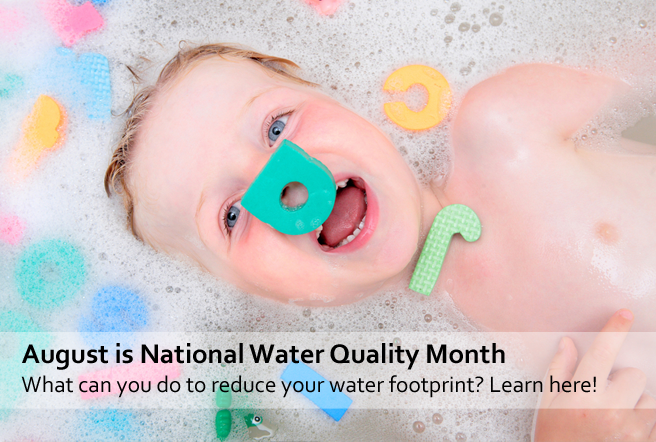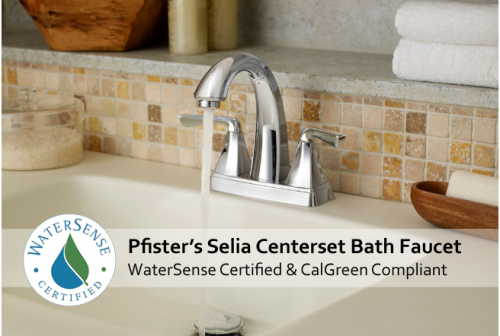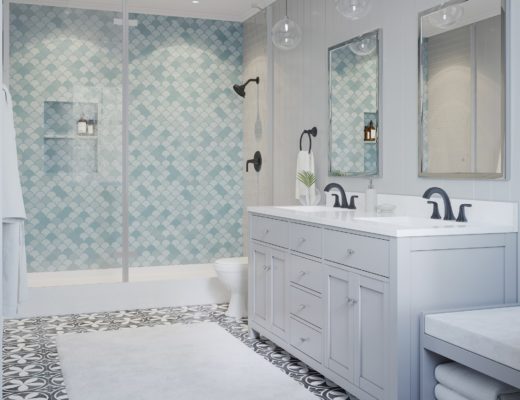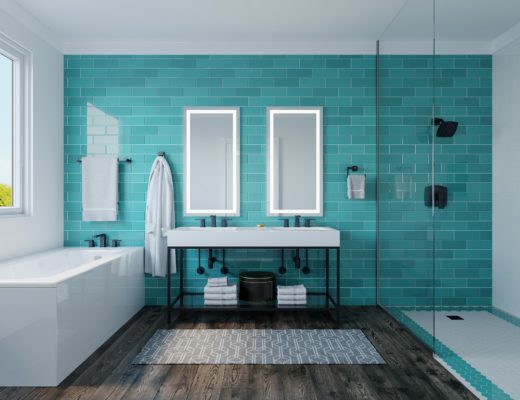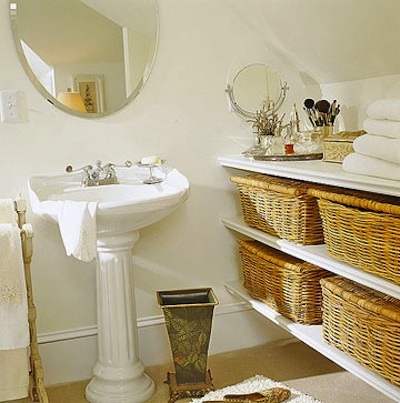Global water quality and individual water conservation go hand in hand. By decreasing water consumption we can reduce the energy used to heat the water and lower the impact on water and treatment facilities. According to homeneergy.org, bathroom water usage alone accounts for nearly half of an average household’s consumption! We’re challenging our readers to contribute to National Water Quality Month by reducing bathroom water usage and choosing products designed for conservation. We’ve listed some quick tips for the sink, tub, shower and toilet to help you get started today!
BATHROOM SINK
- Replace old worn-out faucets with and EPA WaterSense Faucet. Older faucets have a standard flow of 2.2 gallons per minute (gpm), while WaterSense faucets reduce water flow by 30% without sacrificing performance. Installing a WaterSense faucet can save 700 gallons of water per year—about 40 showers worth!
- Whether a faucet is replaced or not, simply adding a high-efficiency aerator reduces the flow from 2-4 gpm to less than 1 gpm, by adding air to the spray to lower the flow. Aerators can save about 1.2 gallons per person per day and cost only about $2 each.
- Plug the sink instead of running the water to rinse your razor. Save up to 300 gallons per month.
- Turn water off when washing hands, brushing teeth or shaving. Save approximately 10 gallons per day.
Pfister offers a wide selection of WaterSense and CalGreen (stringent sustainability and ecological standards) compliant products like the Selia Centerset Bath Faucet.
SHOWER
- Turn off the water while washing your hair. Save up to 150 gallons per month.
- If your shower fills a one-gallon bucket in less than 20 seconds, replace the shower head with a low-flow aerated WaterSense labeled model. Save: 2.5 gallons per shower.
- Take five minute showers instead of 10 minute showers. Save 12.5 gallons with a low-flow shower head; 25 gallons with a standard 5 gpm shower head. (saveourh2o.org/content/home)
- Fun Tip! Bob Villa and “This Old House” recommend installing a shower timer in the kids’ bathroom. The battery-operated device limits showers to 5, 8, or 11 minutes. The Shower Manager product costs $115 and this DIY installing can speed up your kids’ mornings and save more than $200 per year.
BATHROOM TUB
- A bathtub can use up to 70 gallons of water. Fill the bathtub halfway or less to reduce total volume. Save up to 35 gallons per bath.
- When running a bath, plug the bathtub before turning on the water to reduce waste. Fill with the hottest water first then adjust the temperature as the tub fills to avoid using more hot water than necessary.
- Fun tip! Use a little organic, eco-friendly bubble bath to create a layer on top of the water to keep the bath hotter longer.
TOLIET
- If your toilet was installed before 1992, upgrade to a WaterSense labeled toilet that uses a maximum of 1.6 gpf, compared with 3.5-5 gpf for older models. Save 19 gallons per person per day.
- Consider buying a dual-flush toilet. It has two flush options: a half-flush for liquid waste and a full-flush for solid waste.
- If you can’t replace a higher volume toilet, put a plastic bottle filled with water in your toilet tank to reduce the amount of water available in the tank per flush.
- Don’t flush things down the toilet to dispose of them (use a trash can instead.) Save 1.6 gallons per flush.
- DIY Test: Test your toilet for leaks at least once a year. To test, put a few drops of food coloring in your toilet tank. If it seeps into the bowl after 15 minutes without flushing there is a leak. Fix it and start saving gallons.
What other bathroom water-savings tips does your household employ?
